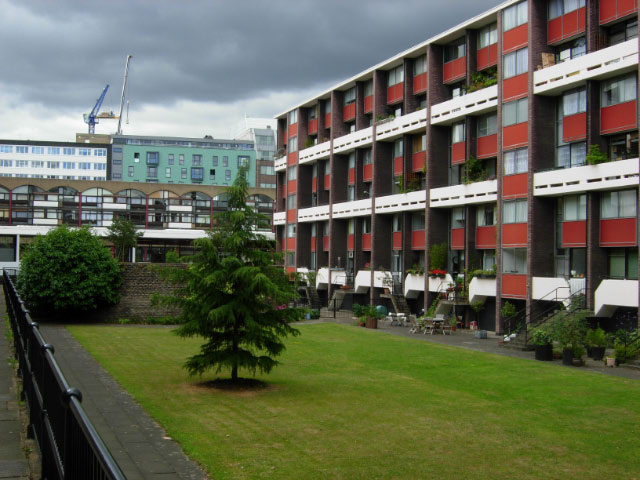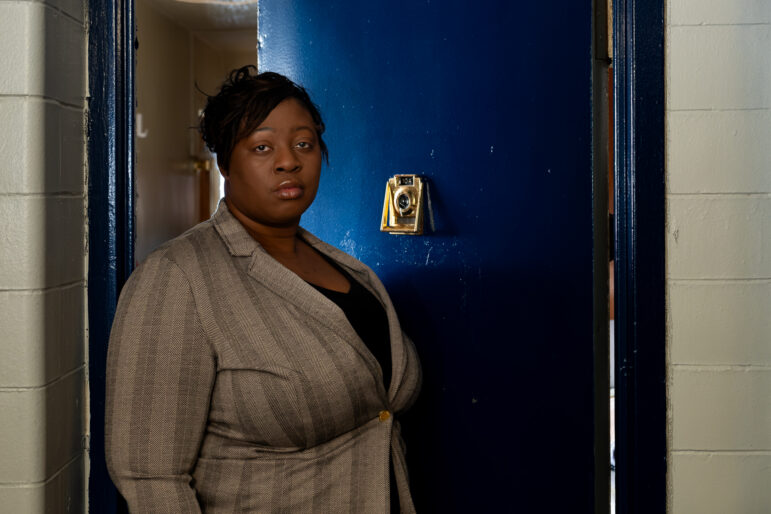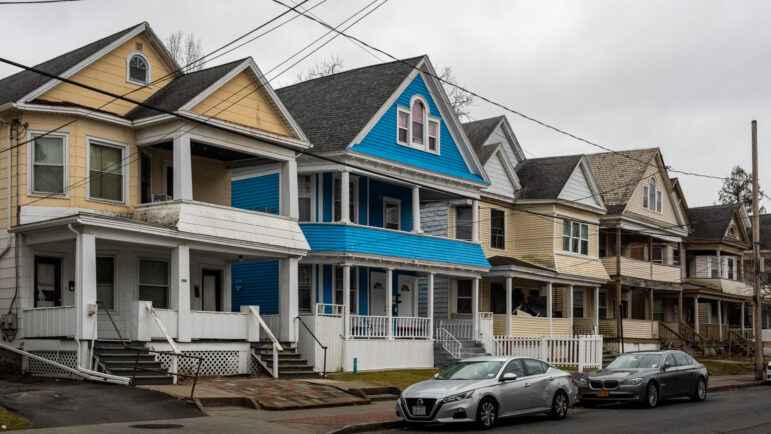
Stephen McKay
The Golden Lane Estate in London comprised some of the 770,000 units of public housing the existed in the city before the first wave of reforms in the 1980s.
When I lived in London in 2001 and 2002, one of the Britishisms that stood out was the phrase “grim estate,” which regularly featured in TV anchors’ descriptions of the scenes of crimes, unemployment or other social problems. The camera would pan to an oppressively large, gravestone-gray high-rise set on a bleak plaza, maybe with one or two exhausted-looking women breathing cigarette smoke and shooting cold states from their rain-soaked terraces as the cameras rolled. That was the “grim” part. “Estate” was a reference to how the structure had come to be: namely that it was a “council estate,” part of the massive amount of public housing the United Kingdom built in the 20th Century.
The 770,000 or so Council apartments in London in 1980 suffered from many of the same problems NYCHA is dealing with today, like aging infrastructure, management lapses and a lack of ongoing funding. So Margaret Thatcher allowed tenants to buy their housing, which a couple hundred thousand households did. But that left the councils (there are 33 councils or boroughs in London and each controlled its own public housing) with nearly half a million apartments that were too decrepit to buy and/or had tenants who were too poor to purchase them.
The Citizens Housing and Planning Council recently brought over from London a panel of people who lived through the experience of what happened next: The mid-1990s decision to permit councils to pursue, in active concert with their tenants, one of a number of new approaches to running their housing, from splitting their portfolio up, to handing it off to private control or management, to putting tenants in charge.
Sarah Watson, CHPC’s deputy director and a veteran of housing work in the UK, joined WBAI’s Max & Murphy on Wednesday to discuss London’s approach.
“There was acknowledgement that we were going to have to bring in private capital, private developers, whether for-profit or not-for-profit, because the housing authorities themselves couldn’t bring in [investment] by themselves. But if we were going to do that, we had to make sure the tenants’ voices to be elevated to make sure the balance is still there to maintain the public good,” she said.
Get the best of City Limits news in your inbox.
Select any of our free weekly newsletters and stay informed on the latest policy-focused, independent news.
“It was given to tenants to decide what do we need to move forward. Maybe we need full demolition and reconstruction, Maybe some of it’s just improved management and how to do that? In some areas, there were motivated tenants who wanted to do their own management organization. Maybe they had a majority of tenants on a board. There was a range of options given to the housing authorities, but it allowed them to choose what is best for us.”
While not every Council estate has been well run or addressed its maintenance issues, Watson says there’s no doubt the approach improved housing conditions. She’s careful, however, not to suggest the ideas necessarily translate to New York, which has a different governing structure and a different culture around the public sphere than the UK. But what the episode does illustrate, she argues, is that having some sort of bold, clear vision is essential.
“We’re not saying the same thing has to happen in New York,” she said. “We are putting forward that change is possible and it takes some radical new approaches and certainly some bold leadership.”
“One of most useful lessons is the clarity of purpose around this Regeneration phase. And the clarity of purpose was that every unit had to hit a certain housing standard in 10 years,” she continued.
Listen to the interview below. Or hear the full show, which includes a talk with the interim CEO and chair of NYCHA, Kathryn Garcia.
Sarah Watson of the Citizens Housing and Planning Council
Full Show of May 29, 2019: The Present and Future of Public Housing in NYC








